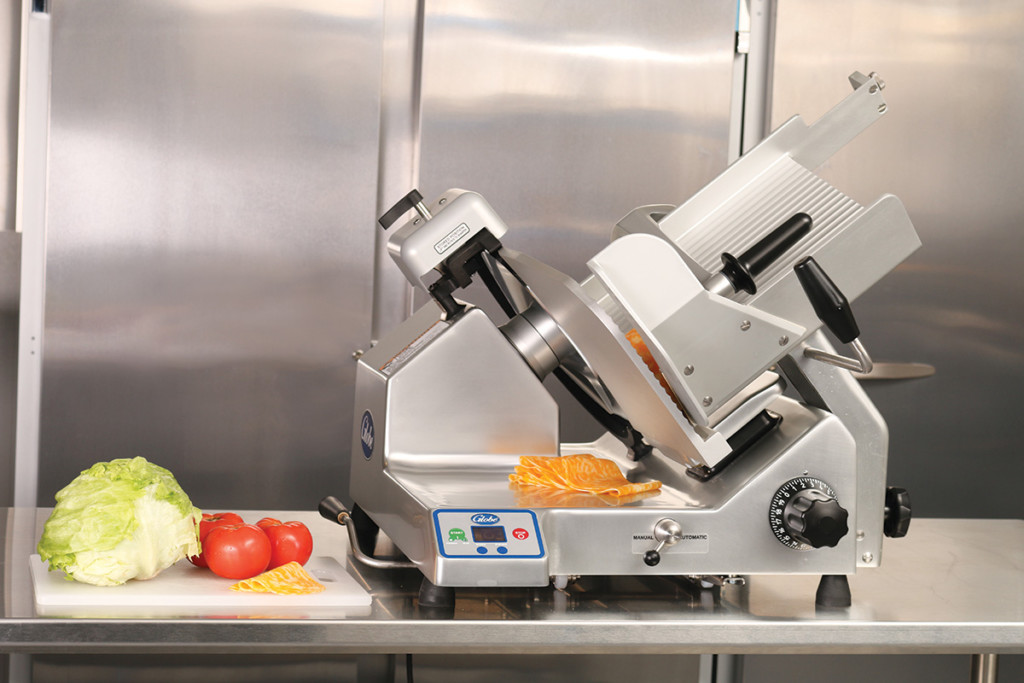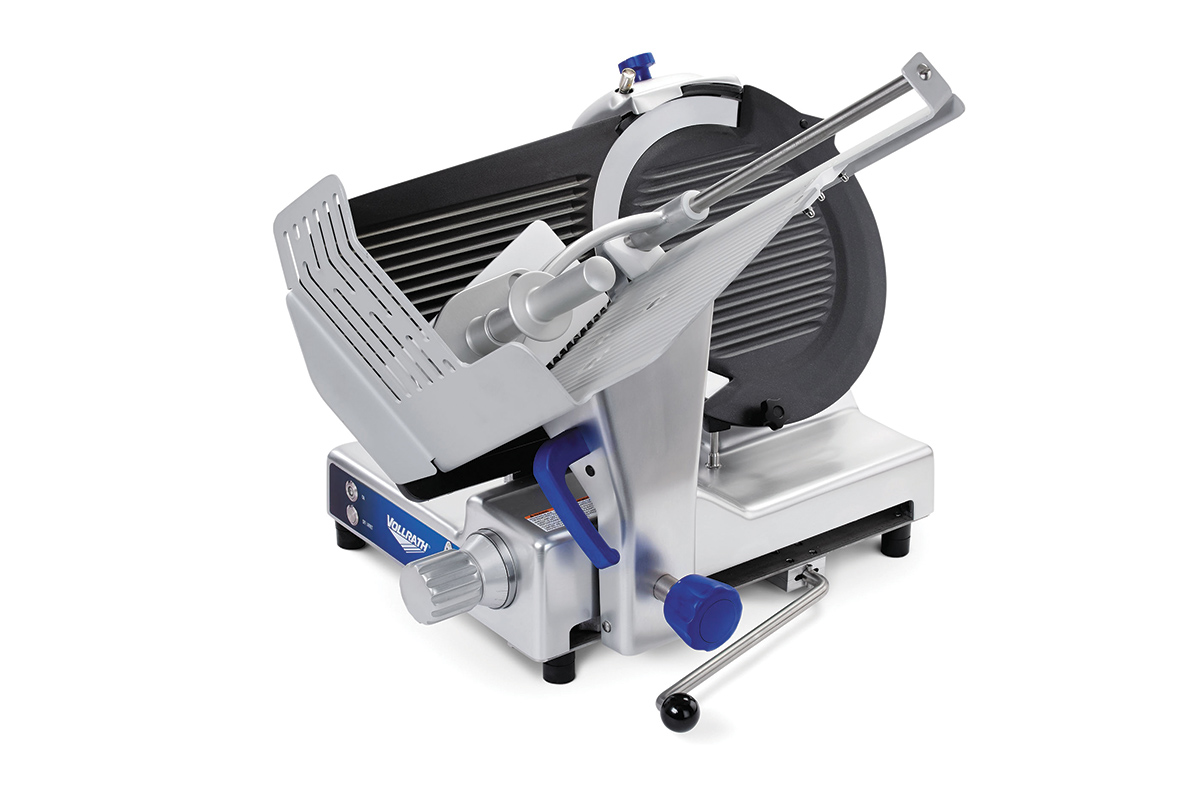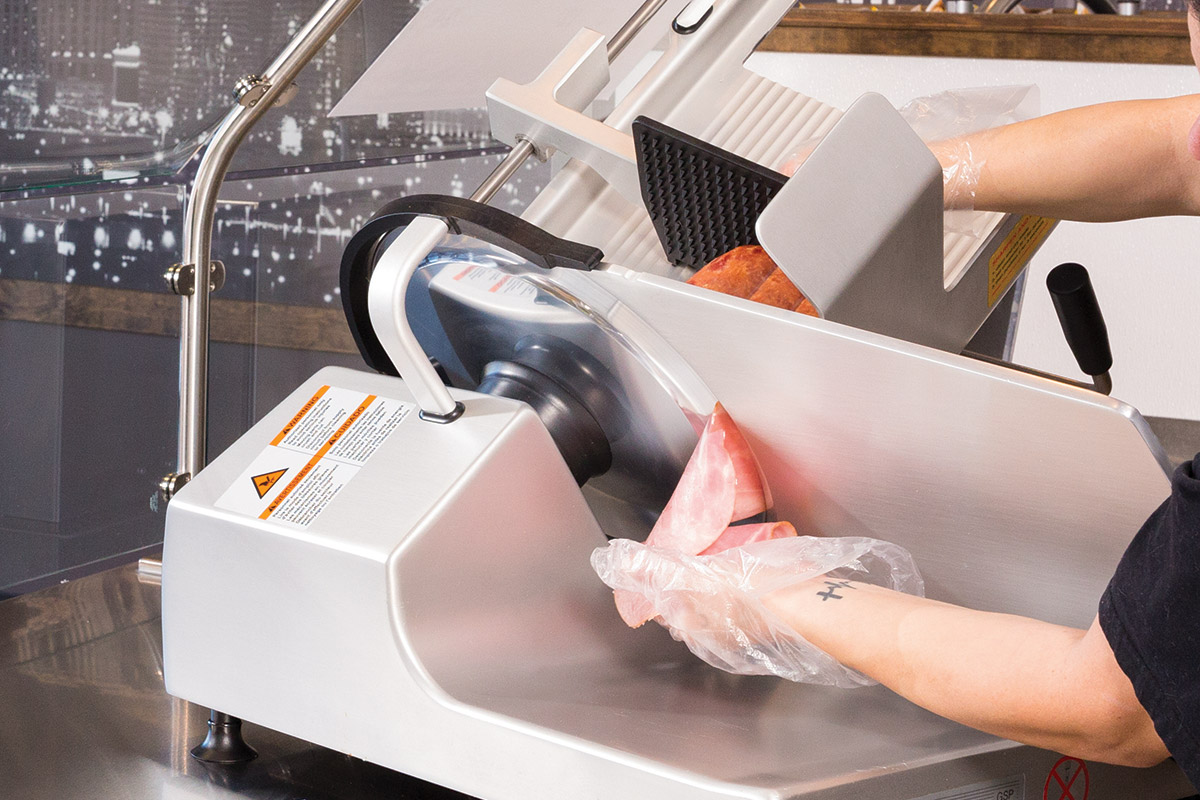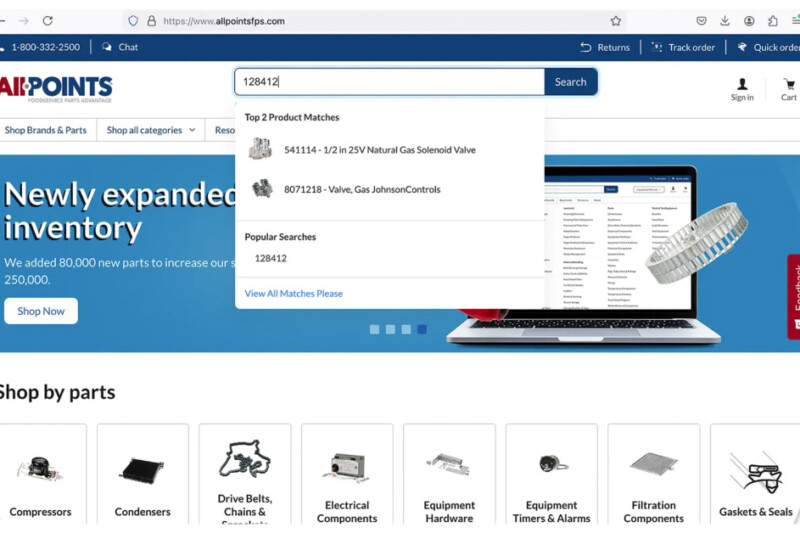
After years in the equipment repair service, Dan Cone thought he had seen it all. That is, until he made a repair call to the deli of a large grocery store chain for a problem with a slicer. "I got to the deli and immediately saw the slicer was pretty dented and beat up," says Cone, owner of Dan Cone Group Commercial Food Equipment Solutions in Moline, Ill. "Clearly the slicer had fallen off the counter and they had lifted it back up and were trying to act like it was a mechanical problem. It was just like catching a kid who wrecks his dad's car and parks it back in the garage hoping the dad won't notice the dent."
The slicer had fallen prey to a common issue with semi-automatic slicers: the back-and-forth motion of the machine's arm, with the added weight of a big chunk of meat, causes the entire slicer to move a little bit at a time. "In this case, the slicer had been turned on and the operator walked away to do a different task, and wasn't able to correct the slicer's placement before it fell off the counter," Cone says. The damage could have been prevented with appropriate supervision and the installation of brackets on the counter to help hold the slicer in place.
This is just one example of what can easily go wrong in the day-to-day use of a slicer at a busy deli or sandwich shop, but the other common problems are just as easy to prevent. Slicers can easily run a few thousand dollars, so it's important to take good care of the equipment to get the best possible return on your investment.

Make safety a priority when performing maintenance. Disconnect power and wait for the blade to stop rotating. Use cut-resistant gloves when dismantling it for cleaning.
Regular Cleaning
One of the best ways to keep a slicer in top working order is to follow the manufacturer's recommendations for cleaning. Be sure to wipe the slicer down after each use to remove any particles of meat or cheese that might be on the blade, the baffle plate or the product tray. Those bits of left-behind food can cause a multitude of problems. One issue is when the food particles get into the sharpening stones. "The sharpening stones [on certain models] are porous, and if there's food or moisture in the machine it will get in those pores and cause them not to be as effective," says Paul Pumputis, western regional manager, Duffy's AIS, Sauquoit, N.Y.
Another issue caused by lack of cleaning is the threat of corrosion to slicers with aluminum construction. "If there's meat, cheese, tomato or any other kind of product left behind, the moisture from the food can cause the aluminum to corrode," says Tim Lochel, service manager, Elmer Schultz Services, Philadelphia. "This causes things to expand, leading to safety guards not fitting properly and the sharpening stone set not seating properly or moving smoothly."
Food particles are a safety hazard, as well, as they can harbor bacteria that could contaminate the next product run through the slicer.
In addition to wiping down the slicer after each use, do a thorough cleaning about every four hours. (Check local health codes.) This includes wiping down the entire machine with warm water and coating the machine completely with a sanitizing solution. Wipe the solution off with a clean cloth or let it air dry, depending on the instructions. Never put the slicer in a dishwasher, as it can cause rust and even lead to the slicer seizing up.

Train employees to hand wash slicers and not put them through a dishmachine. (It happens.)
Controls to Keep You on Track
New digital controls and graphic displays on some models make it easier than ever to keep up with the cleaning schedule. The digital controls count the number of slices made and how long the machine has been on, and can be set to give reminders via an alert on the display for cleaning every four hours.
Smooth Operations
Even with a well-cleaned slicer, constant use can cause parts to gum up. "The slide valves on the meat table will start to stiffen up during use and make the table hard to move," says Lochel. "There's a quick fix for this problem, which is to spray the valves and bushings with oil. Just make sure to use the manufacturer’s oil or mineral oil, never use cooking oil." Cooking spray and vegetable oil aren’t lubricants, and while they might seem to make the valves run smoothly for a few slices, they will coagulate and make the situation worse. “We get at least 10 to 15 calls a year where an operator has sprayed cooking oil on the parts to the point where they won’t move anymore,” Lochel says.

A sharp blade will ensure quality slices of everything from tough meats to gummy cheeses. Sharpen the blade about every four hours, depending on use. After sharpening, carefully wipe off the blade to clear minerals left behind.
Staying Sharp
Pay attention to the blade to get the type of slices you demand from the machine. Whether you're working with gummy provolone cheese or hard prosciutto, a sharp blade will produce quality, paper-thin slices every time. Manufacturers recommend sharpening the blade on the same four-hour schedule as the cleaning. Over time, sharpening will cause the blade to wear down, which can affect the quality of slices and also become a safety issue. "When closed, the indexer should sit slightly above the blade," Lochel says. "If it's sitting below the blade it's time for a service call to replace the blade and reseat the indexer."
Slicer Maintenance Takeaways
✔ Wipe down the blade and plate after every use.
✔ Thoroughly clean the slicer and sharpen the blade every four hours.
✔ Never use a dishwasher to clean the slicer.
✔ Only use the manufacturer’s lubricant or mineral oil on moving parts.
✔ Make sure the blade is clean before sharpening.
RELATED CONTENT
- Advertisement -
- Advertisement -
- Advertisement -
TRENDING NOW
- Advertisement -
- Advertisement -
- Advertisement -


